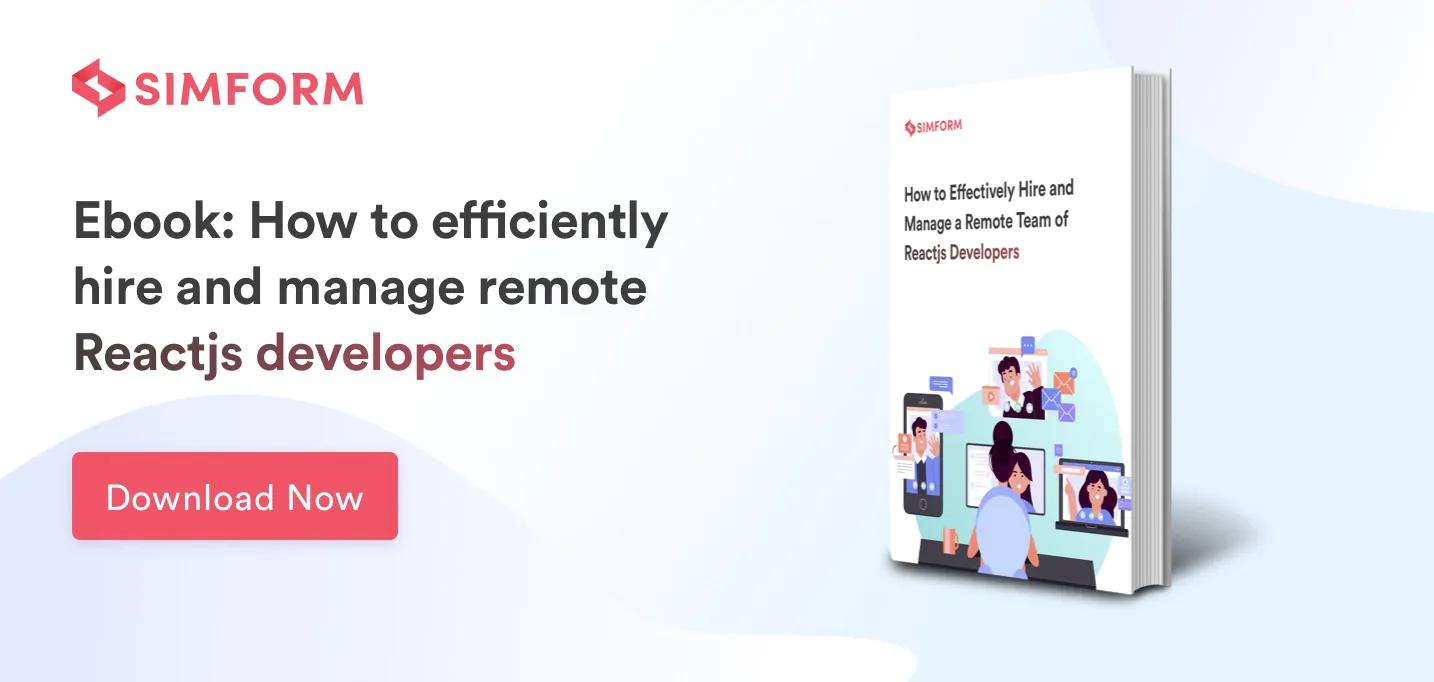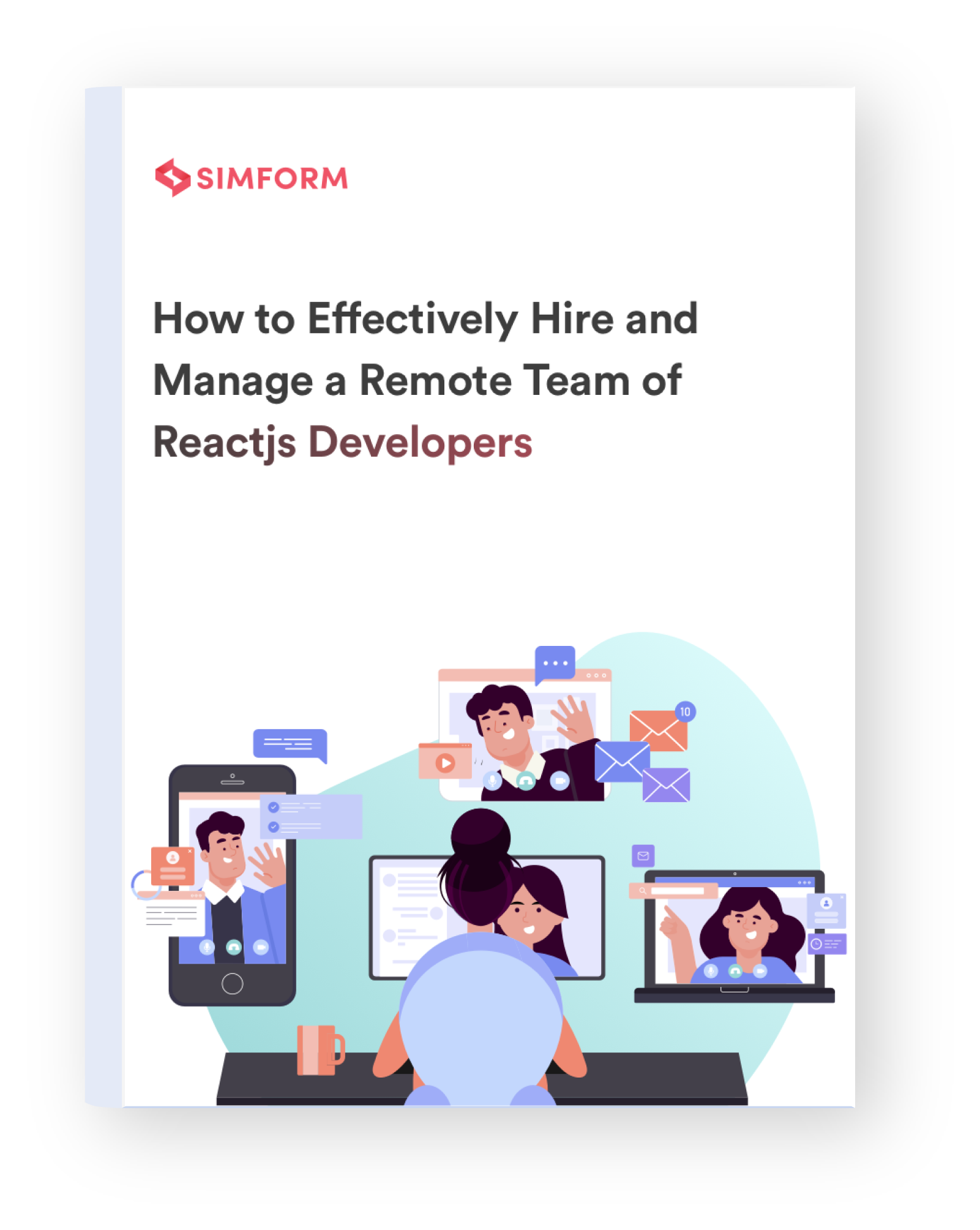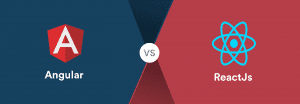25+ Powerful React Libraries to Try in 2024
What’s left the entire development community in awe of Javascript is– React! To be more precise, it’s the way the ecosystem has evolved into a mature community rather than an extension of React libraries.
Initially, our team had mixed feelings about the ecosystem of Reactjs being immature and broken. However, every time we picked React for our client projects, we discovered thousands of packages and libraries that helped us build web applications. If you’re feeling the same about Reactjs and want to have similar requirements, explore our web app development offerings.
Anyway, recently, we wrote a blog on how React can be paired with Nodejs along with use cases to substantiate it. Up next – to continue this trail of, what we call, React Saga. Let’s explore the powerful libraries that exist in the React’s ecosystem as of 2024.
List of best React Libraries in 2024
To begin with, let’s start with the top-level hierarchy of React libraries i.e. Navigation.
We can’t stress enough how important it is for a web application to seamlessly navigate users from one page to another. However, when it comes to Single Page Applications (SPA), it becomes tedious to reload the entire page while navigating between sections. Instead, a SPA must render part of the UI where the interaction with the user takes place.
Here’s when routers come into the picture. In general terms, a router translates the browser address into related pages and allows users to navigate within the web application. SPAs follow a dynamic routing approach where every time a new data is fetched when a user interacts with the application.
To understand this setting, let’s see how React caters to the routing approach in SPAs:
1) React Router
React Router, a group of navigational components synchronizes the components of the UI with browsers address. This makes it effortless to handle navigation in SPA.
Additionally, it offers vivid nesting support, stable screen-to-screen transitions, and server-side rendering.
React CLIs and Boilerplates
To simply put it, Boilerplates are reusable blocks of code that enable you to configure various libraries at once. It, further, lets you make identical copies for different projects that can be reused later.
2) Create-React-App
Create-React-App is a CLI tool that requires no building configuration. In fact, it facilitates the generation of your own boilerplate and lets you initiate the app building process smoothly. You need only one build dependency, and thus, no more complexities are involved. More suitable for simple web apps, this CLI tool has underlayers of Webpack Babel, EsLint, etc.
 React UI Component Libraries
React UI Component Libraries
For users to keep coming back to your app, it is absolutely essential to design a user interface that’s interactive and engaging. React offers a bunch of several UI component libraries that can save time for both development and deployment. Let’s cover them one-by-one.
3) Ant-design
Ant-design is Simform’s personal favorite. It is a consolidated development framework of NPM, Webpack, Babel, Dora, and DVA.
What’s special about this component library is its broad and unique customer base. Also, it allows you to nest your UI components, which in turn provides a smooth user experience.
This much-admired React UI library enables painless integration and provides ES6 support.
4) Tailwind UI
A low-level CSS framework built for ReactJs, Tailwind UI is a highly customizable UI library. It proffers utility classes (in-built classes) instead of inbuilt components that relieves you from overriding styles. What’s more, you no more have to code from scratch while using Tailwind UI.
This flexible UI library gives you the ability to reuse styles in your code. Its configuration in JavaScript gives a potential programming language’s feel and use.
5) Semantic UI React
Semantic UI React is a jQuery-free React UI component library incorporated by prominent companies like Sublime Fund, and Netflix.
Being a declarative API, it adheres to an adaptive React Ecosystem. Nonetheless, having shorthand props, it lessens the burden of hasty coding exercise.
6) React Bootstrap
Built with compatibility in mind, React Bootstrap gives you more control to reuse and integrate UI components than any other UI library. It is prebuilt with Bootstrap components and offers a fluid interface- handling experience.
Along with the Bootstrap stylesheet, it brings back the old joy of using compatible Bootstrap themes. This way, developers can code quickly and more efficiently by using reusable and faster coding methods.
7) Fabric React
Fabric React is often known as Office UI Fabric. Currently, it is famous for the native implementation of Fluent UI components with React-based applications. React-Fabric is backed up by widely used frontend language modules like ES6+, Webpack, and CSS (SASS). The Fabric core is a collection of SASS components mixed with CSS classes, which in return provides access to a wide range of colors, animations, and so on.
8) Styled components
Styled components are one of the modern ways React allows component-level styling of applications by combining JavaScrip and CSS via a CSS-in-JS technique. In other words, it also serves as the successor of CSS modules. It focuses on elevating the visual styling of components. As a result, building frontend UIs with React has become more flexible in customization as per requirement.
9) React DnD
DnD represents the Drag-and-Drop interface with React. It offers grabbing and gesture-based user interaction to select visual objects and drag them to any desired location across the device screen. React DnD is built with HTML5 drag and drop API, and it uses Redux internally. It provides the necessary possibilities to create Trello like complicated drag and drop interfaces without affecting the data transfer and continuity in the application state. In most cases, this API is the commonly preferred library to create drop events.
Notable UI libraries
10) OnsenUI
It is an open-sourced UI component-based framework built on top of the hybrid HTML5 version based on Cordova or PhoneGap. Onsen UI is a perfect choice to use with React for creating core web components. Onsen UI is a common choice for building UI components that deal with navigation, forms, material design, and lists.
11) Rebass
Rebass is a primitive UI component built with a styled system to match the expectation of React ecosystem. It is highly composable and follows the principle of providing unopinionated and flexible UI components. These components are consistent, extensible, useful, and for theme creation. Rebass reduces the need for writing customized CSS codes.
12) Material UI
Material UI is considered one of the most reliable React libraries that provide readily available and customizable UI components. This library offers optional CSSBaseline components that help fix inconsistent UI behavior across various React-based browsers irrespective of the device support. Even enterprises like Netflix, Spotify, and Nasa leverage Material UI to build flexible design systems.
How To Build an eCommerce PWA using React
Animation Libraries
CSS is the old-school way of implementing animations in a web app. At some point, however, I have noticed that CSS animations are not enough for many of our client’s requirements. React offers an easy-to-use declarative UI called React Transition Group, which provides the possibility to perform animations when building a web app. Here are some other well-known Animation libraries for React:
13) React-motion
A popular animation library, React-motion, uses spring configuration to define the animation. And hence, it erases your worries about controlled duration and complexities. This animation library also simplifies the development flow within React components using damping, stiffness, and precision methods.
React- Spring API fills the void between imperative and declarative approaches. Moreover, you can expect a secure, shared-transition as well.
14) Animated (React Native)
Animated is one of the most commonly used Animation libraries when building mobile apps with React Native. Apart from being an adaptable and flexible library, it possesses an incredible capacity for better time-control and sequence managing than other libraries.
15) React Spinner
React-Spinners is one of the trustable libraries to create a loading state as per the requirement of a given project. There are two different kinds of spinners, namely Border Spinner and Grow Spinner. Each of these loading spinners can be configured with varying animation and color properties by writing custom CSS classes. These spinners can also be used with button elements with improved accessibility.
Form Libraries
Who loves building a form element from scratch when it can be used with a library? React form libraries provide better and faster ways to create customized components including inputs, selects, buttons, and potentially new components. The most popular library for forms in React is React Hook Form, which is a valid solution for the React app if you start having more complex forms.
16) React Hook Form
React Hook Form is a minimalistic library without any dependencies.
As the name suggests, it is usually used with React hooks API. It makes form validation easier by aligning the UI interface to the existing HTML standards. It also brings together uncontrolled components and native HTML inputs. It is flexible in terms of integrating with external React UI component libraries. What’s more, you can also integrate it with React state management libraries.
Built with Typescript, it helps define a form data type to support form values. It makes the form error-free by minimizing the re-rendering time by up to twenty times than Formik or Redux Form.
Code formatting
17) ES-Lint
ES-Lint is a pluggable and configurable open-source and javascript linter tool. This linting library in the React Ecosystem points out creases in JS code that do not adhere to the standard guidelines. It makes the code more consistent and bug-free. ES-Lint improves the overall code-quality by evaluating patterns in code and overcoming errors by auto-fixing the code.
18) React Intl
React-Intl functions with FormaJS as its main base. It focuses on the Internalization of code formatting on the client and server end. React Intl provides the necessary data binding resources via simple components and APIs. In other words, React-Intl is a library that supports data formatting for dates, strings, numbers, translation, and pluralization of 150+ languages. In addition to this, React Intl is also best suitable for a content management system since it can overwrite and modify default messages.
19) Prettier
Prettier is a code formatter that is faithful to the preset formatting rules. It works with many languages, has few options, and integrates with most editors. It scans files for style issues and auto- reformats code to ensure consistency in rules for indentation, spacing, quotes, etc. Prettier is known as an opinionated code formatter with support for:
- JavaScript, including ES2017
- JSX
- Angular
- Vue
- Flow
- TypeScript
- CSS, Less, and SCSS
- HTML
- JSON
- GraphQL
- Markdown, including GFM and MDX
- YAML
Though Prettier does a better job at formatting errors, it formats code even at the cost of the loss of the original code.
Testing
20) Enzyme
Enzyme is a testing library for React that allows transversing, manipulating, and simulating React components’ output to achieve the desired result. It is often considered more straightforward and useful compared to other testing libraries. Unlike most testing libraries, Enzyme is flexible and intuitive as it has the power to mimic DOM and the jQuery API. Enzyme also offers a unique API called the Shallow Rendering API, which allows testing of only the necessary components as per requirement, ensuring that the application is not loaded with too much testing of all components at once.
State Management
The importance of state management lies in the fact that it keeps the state of all users intact across different web forms. The user can pick up exactly on a mobile device from where he had left on a desktop.
21) Redux
A predictable state container and a free-standing library, Redux, is primarily used with React UI library components, but can also be used with Angular, Vue, Ember, and Vanilla JS, etc. But taking a note, Redux and React are independent of each other.
It can be used both with frontend and backend libraries. It helps connect the pieces of state to React components by reducing the need for callback or props.
Acting as the best friend for the developers, it helps write consistent codes, runs well in different environments (client, server, and native), and can be tested easily. It enables live code editing and behaves like a time-traveling debugger.
Camouflaging in a small size of 2KB, it has a vast range of addons available.
It requires a “UI binding” library to interact with the UI framework instead of any direct linkage of the store.
React Native has its official Redux library called React-Redux.
22) Mobx
MobX is a rugged library that simplifies state management, and applying functional reactive programming (TFRP) transparently makes it scalable. The basic premise of MobX is that anything which is derivable from the application state should be derived automatically and efficaciously.
Though Mobx is an easier and simpler option to Redux, Redux scores over Mobx.
Mobx is for quick-to-build and simpler apps with lesser boilerplate code.
Payments
With surveys showing the global digital payment market reaching up to almost USD 10 Trillion by 2026, traditional business cash flow has been replaced with current online transactions.
Payment SDKs help in facilitating easily acceptable in-app payments with different payment options. Payment SDKs available in React Ecosystem present a reliable way to pay for end-users along with security and assurance.
23) Paypal (React Native)
PayPal checkout integration is exclusively based on the native JavaScript code. It typically uses payment gateways REST (Representational State Transfer) APIs. It makes payments not only simpler and faster but also safer.
The code provides the choice of creating sandbox accounts like PayPal Merchant Account (accepts payments from end-user) and PayPal Personal Account (makes payments to merchant accounts). PayPal payment works differently by first creating a payment and then executing it.
Different buttons are used for addressing payments.
24) Stripe Elements
Stripe elements or API, a feature of stripe.js, is a contemporary and customizable UI components library for payment outflow in the React Ecosystem. Stripe API assures data privacy and quick response with proper authentication. It uses single interface operations for Apple Pay, Google Pay, and payment request API.
Proving its trademark in the market, Stripe API offers a robust functioning of payment form and ease of building a custom form. Payment acceptance and confirmation become quick-to-respond tasks with dynamic card elements such as CVC, expiry, etc. It supports responsive design. In addition, language translation, according to the customer’s preference, is possible with Stripe Elements.
Augment Reality/ Virtual Reality (AR/ VR)
Augmented Reality (AR) is the enhanced version of reality which blends real-world environment with virtual or digital ones. It enables the overlaying of virtual and digital information on to the real-world scenario. Some famous examples are Pokemon Go, Snapchat (Android, iOS).
25) React 360
React 360 helps create mesmerizing 360 and VR experience using React, which extends to desktops, mobile phones, and VR devices. It simplifies the creation of complex 3D and VR user interfaces. Similar to its predecessor, React VR, React 360 uses familiar tools and concepts to create an engaging and riveting experience for the users.
React 360 interacts with 360 spaces by using the applications that combine 2D or 3D interfaces. It boasts of developing photo and video viewers, 360 tours, classic adventure games, and 3D board games, providing the users with rich multimedia content.
26) Viro React
Viro React is an open-source third-party cross-platform which helps developers build augmented reality (AR) and virtual reality (VR) experiences, especially for React Ecosystem.
It supports all mobile VR (including Google Daydream, Samsung Gear VR, and Google Cardboard for iOS and Android) and AR (iOS ARKit and Android ARCore) platforms.
Easy-to-learn, it requires React-Native-CLI and React-Viro-CLI to write cross-platform, native codes.
However, the limitation of ARKit and ARCode is that Viro React is unusable on older OS versions of iOS and Android.
27) Tremor
Tremor is a React library that provides a set of components, hooks, and utilities which help simplify the UI-building process. It has been designed to be lightweight and flexible, making integrating tools and libraries easy.
This React library has a modular architecture, meaning you get to use only the components that you need. This makes it easy to keep the bundle size small and optimize the application’s performance.
Benefits of Using Tremor:
- Familiarity with React makes it easy to learn and use Tremor.
- Well-documented APIs for Tremor integration are readily available online.
- The library is easy to integrate with other libraries and tools.
- It is highly customizable, making modification of the source code easier.
28) Planby
Planby offers pre-built components that help in the creation of modern web applications. The benefits of using Planby include access to a responsive design system that allows you to build high-performance applications and comprehensive documentation covering all its components and features.
Lastly, layout components in this React library enable the creation of complex and responsive layouts with tools to manage the global state.
29) Advanced Cropper
React Advanced Cropper is a JavaScript library that provides an image-cropping tool for React-based applications. It allows users to select an area of an image and crop it to a desired size and aspect ratio.
The library is built on Cropper.js, which offers a sophisticated and customizable UIkit for React applications. With a React library like Advanced Cropper, you can customize the appearance of the crop box and overlay.
Further, you can provide callbacks for different events and adjust the crop tool behaviour accordingly.
Advanced Cropper also provides additional features like zooming, rotating, flipping, and image scaling. You can also enable support for multiple image formats and add a function to save the cropped image as a data URL using Advanced Copper.
30) Modalize(react-modal)
Modern web applications require better access to content, and Modalize offers the same using modals. It helps in creating high-quality React components to display modals with an overlay. A modal is a React component that shows content over an enclosing view.
Modalize provides a customizable and flexible way to create modal dialogs or pop-ups in your React applications. Modal dialogs display important information, confirmations, or warnings to the user in a non-intrusive way.
Some of the key benefits of Modalize are,
- Customization features include changing the modal’s background color, opacity, and animation effects.
- Better accessibility for users with disability through features like keyboard navigation and screen reader compatibility
- Higher flexibility for the types of modals you can create. For example, you can create full-screen modals with different content types (such as forms, images, or videos), and more.
Conclusion
In this article, we have listed the best React libraries that serve specific purposes in the ecosystem. Although we can’t cover each & every library, the ones we mentioned are most prominent. By leveraging these libraries, organizations will be able to accomplish common Javascript tasks. However, odds can be still there when you won’t find a library dedicated exclusively to your task. In such cases, it’s better to take the help of a community or hire professional Reactjs developers.









Prasanna
thanks for the useful post....keep doing the good work
Leisl Martin
Thanks for sharing such a valuable information on React Libraries. I Would look forward to reading your latest blogs.